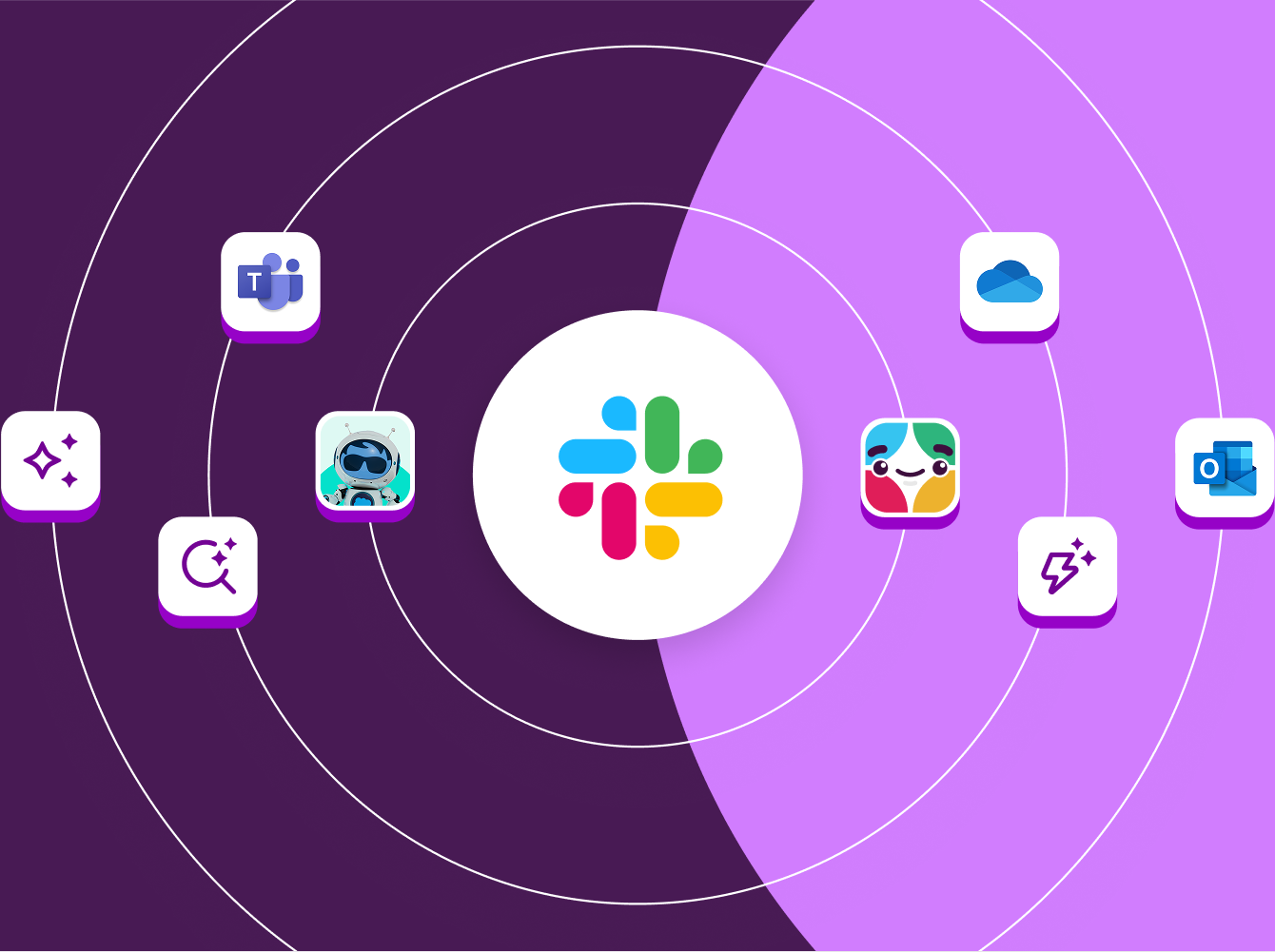Microsoft Teams vs. Slack. People ask what’s the difference, but did you know that they are often used side by side? It surprises many companies because what most organizations actually lack is a true collaboration strategy. In fact, 76% of customers are also O365 users. We believe that the power of collaboration lies not in the tools used but in how employees are supported.
In this overview you will gain a better understanding of Slack’s unique platform and how it can increase the value of your O365 suite, see examples of customers who have created their own successful strategy, and learn how to build your own.
A satellite view of an enterprise ecosystem
A place where systems, applications, and communities collaborate together
A lot of digital offices might look like this right now. Systems and conversations are held together by different tools and applications.
We tend to force new tools to fit the ways we already work. But over time, we change the way we work to fit the new tools.
Satellite View
O365 customers have been growth hacking productivity for years, believing that the O365 Suite would instantly connect the systems and conversations.
Instead, the O365 Suite becomes a siloed ecosystem within your larger enterprise network, and employees spend more time managing their productivity outpost.

Ecosystem + O365

The O365 Productivity Plateau
Gartner says that O365 does not actually always make users more productive. There are 3 reasons why:



What does it look like when Slack + O365 work together?

O365 + Slack Co-exist Models:
Customers fall into three main models. Here’s how they think about their O365 + Slack strategy to improve business.

1. Organic Model
A global online payment system provider with over 300M users saw the Engineering and Product teams begin to use Slack. Leadership was surprised by how sticky and excited users were. They decided to use it as their central collaboration connector for companies they were acquiring. They found that 99% of the companies they acquired used Slack. It helped them to quickly ramp these acquisitions and make them feel part of the global company. Leadership lets teams figure out which tool, Slack or Teams, to use in the way they do their work.
Built with Slack
Primarily use Slack to build community (huge presence for employee resources), bringing the right people together around a persistent topic or incident management, and locate a subject matter expert quickly and efficiently. They see Slack as their Community Hub.
Administrate with O365
Teams is promoted to be used with sharing access and files
2. Purposeful Model
A global car manufacturer changed their model of selling, and decided to move all of their field sales into one regional city. They were worried about the sales team feeling disconnected from HQ, and Teams was not enabling open communication.
Built with Slack
Open Communication so the field sales teams could be connected with each other, HQ, and partners
Administrate with O365
- O365: HQ Leadership uses both Teams and Slack and guides employees when to use which tool
- Outlook used for email communications
- Sharepoint used for file management
3. Transformational Model
A multinational technology company needed to streamline their software release process and minimize switching between development tools. A new CEO joined during the pandemic, and he need to quickly rally all 300K+ employees to make them feel safe, connected, and like they belonged.
Built with Slack
They use Slack across all 360,000 of their employees and Leadership prioritizes connectedness through AMAs and covid support channels
Slack enabled their engineering teams to move to continuous delivery and drive end-to-end dev of new products with Application integrations with NewRelic, Splunk and PagerDuty for seamless monitoring and incident response
Administrate with O365
They use PowerPoint and Excel and has Slack as their seamless, all-in-one collaboration platform




Build your O365 + Slack Strategy
A guide to combining Slack + O365 at your organization
1. Audit your O365 tools
Start by auditing your O365 tools and finding out which ones you actually use. Are they creating more noise? Do you need three ways to send a document? Are they sending the right signals for your employees to work remotely?

2. Figure out your co-exist model
Is your organization organic, purposeful, transformational? What are the different ways your company operates?

3. Identify the type of work to be done
What is a goal your organization is trying to achieve? Figure out the systems, workflows and communities that you will need to work with and build in Slack. Next, identify the administrative tasks these systems, workflows and teams will need.












